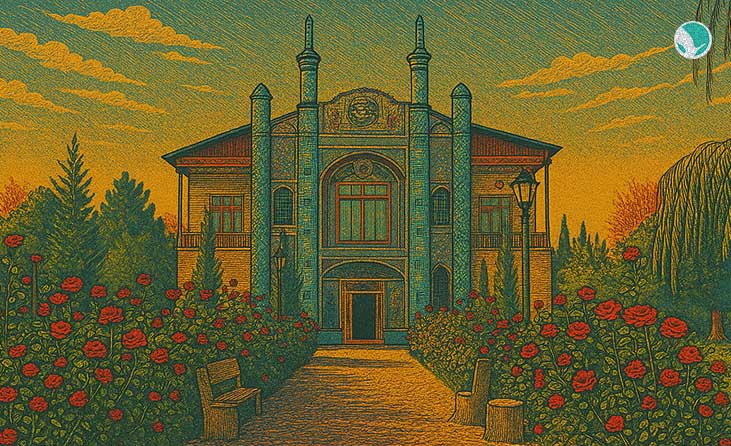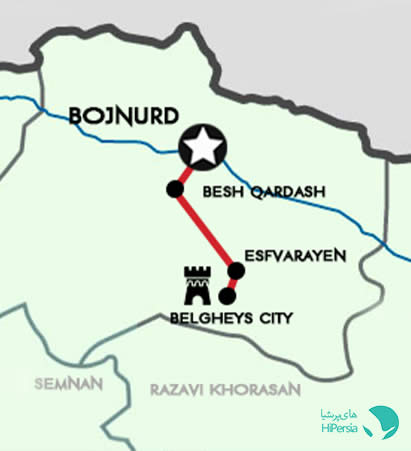



Bojnord is the capital of Razavi Khorasan Province, this city which is located north-east of Aladag mountain and in the heart of Khorasan, has around 300,000 people in population and is one of the most diverse cities in Iran housing Turks, Kurds and other ehtincs, although this city is new (estimated to be created by Safavids) it has important and historical monuments, which survived the two devastating earthquakes in late 19th and early 20th century.
Bojnord is a city of diversity, a perfect depiction of Iran! I always say each part of Iran is unique in it's own sense, and that not only applies to Bojnord but it's a perfect candidate to show it. From beautiful mountains, with diverse flora and fauna to cultural monuments this city has what it takes to create amazing and memorable moments!
This area used to belong to Golestan national park before, but it was seperated and now it's own preservation camp! as I mentioned before the flora and fauna of this city is amazing, with: Rams, ewes, goats, deer, red deer and wolves! also it has birds of prey and even cheetahs. there are amazing waterfalls in there as well!
The Mafkham Mirror House, a striking historical building located north of Bojnourd, is a key monument from the Qajarid era, originally owned by General Mafkham. Its exterior features intricate tile work, while the interiors are adorned with beautifully cut mirror pieces, enhancing its elegance. The two-story structure has nine rooms, including a large hall on the upper floor, also embellished with mirrors. Historically surrounded by a vast orchard, it has survived significant events, unlike the nearby Kolah Farangi Building, which was destroyed by an earthquake. Registered as a historical site, the Mafkham Mirror House has functioned as a museum for handwritten documents since 2000. The adjacent Mafkham Building, constructed in 1300 AH, comprises 34 rooms and two grand halls, showcasing vibrant tile designs and intricate patterns. After renovation, it has been repurposed as a museum of archaeology and anthropology.
The phrase "Besh Qardash" translates to "Five Brothers" in Turkish, which is one of the spoken languages in Bojnord. Tteh legend behind its name says five brothers rebelled against a cruel government, and when they sought refuge on a hillside, they vanished, leading to the emergence of five water springs. During the Qajar period, Naser al-Din Shah visited the site and erected a monument next to the springs.
This is a Sassanid monument, which used to be a fire temple, a place of worship for Zorroastrians in the past, this is the oldest building in Khorasan area Adjacent to this structure, there's a hillside cemetery that contrasts sharply with Muslim burial and tomb-making customs, as the bodies are interred in a family-oriented style. Experts believe that these characteristics indicate the presence of certain Zoroastrian communities in this expansive region, and this impressive building is associated with them.
Spring (March–May) is magical also Autumn (September–November) offers mild weather and softer light in the archeological sites. Summers can be really hot, Around 40C but winters are mild and actually a good time as well.
Our Bojnord tours are crafted for curious travelers who want more than a checklist. With Hipersia you’ll travel with guides who are poets at heart and historians by training. We handle all logistics transport, entrance fees, restaurant reservations so you can immerse yourself fully in the experience. Small-group and private tours are available, and every itinerary is flexible to match your interests.

“Oh! Squander not this breath that Heaven hath lent thee, Nor make too sure another breath to borrow!’” Khayam